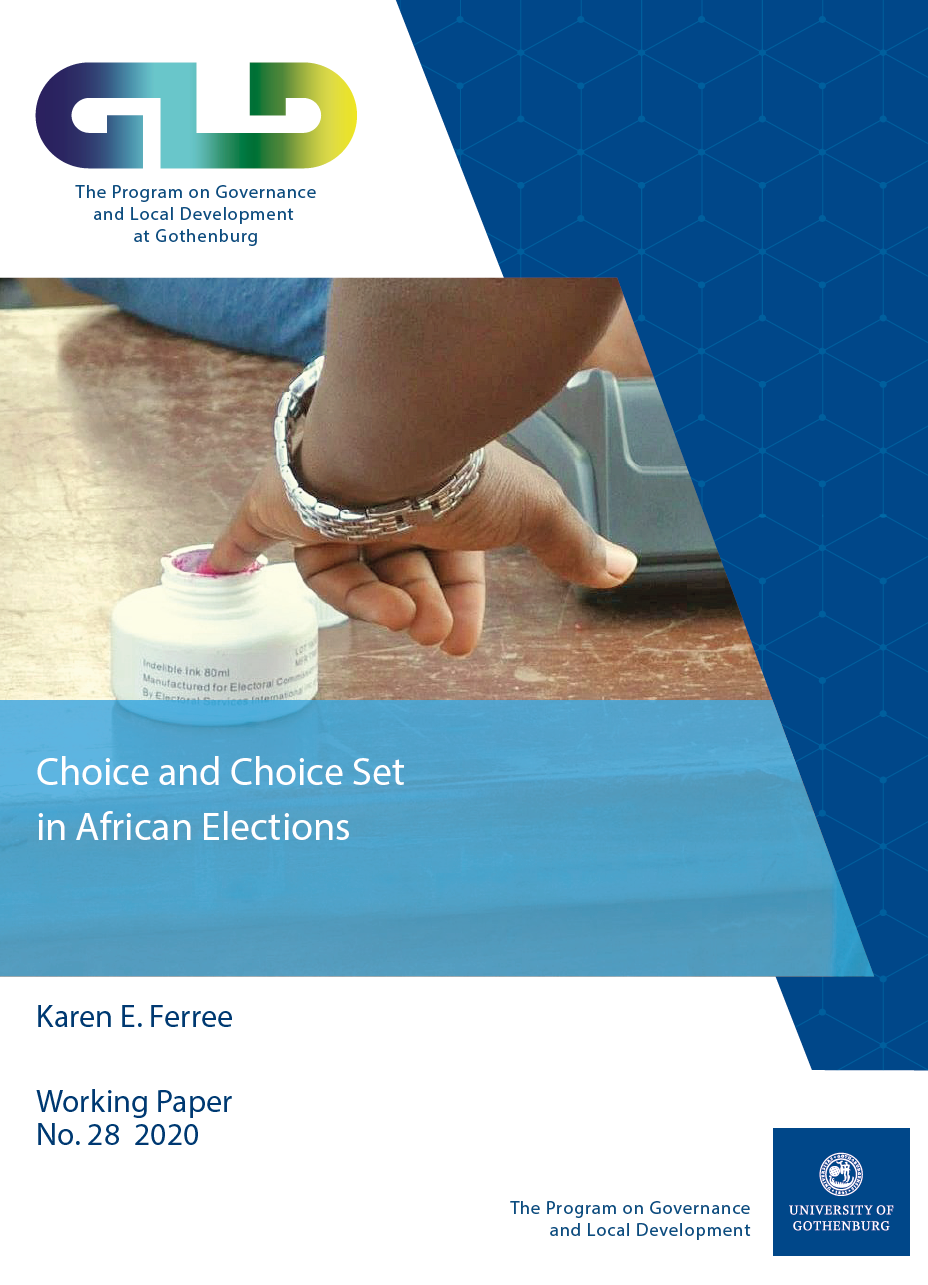No.28 Choice and Choice Set in African Elections
Karen E. Ferree
Abstract
This paper argues for a reorientation of how we think about ethnic voting, away from an exclusive focus on voters to one that links voter behavior to the supply side of candidates. It introduces the concept of choice set, or the set of choices a voter sees on the ballot on election day, and shows that the modal choice set in three legislative elections – Kenya (2007), Ghana (2008), and Uganda (2011) – is not the mixed co-ethnic/non-coethnic set assumed in much of the literature on ethnic voting in Africa. Most African voters in fact see ballots that consist of either all co-ethnics or no co-ethnics. These uniform choice sets constrain choice in ways that predetermine behavior. Moreover, breaking behavior into choice and choice set reveals that differences in prevalence rates of co-ethnic voting across cases is driven as much by the choices voters see on their ballots as the choices they make in the voting booth. Shifting from choice to choice set thus induces us to identify and theorize factors shaping electoral outcomes in Africa beyond those rooted in individual voter psychology: the entry decisions of candidates and parties, constituency boundaries, and the distribution of groups across geography.
